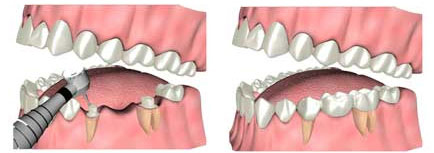Bridges
A bridge is a device used to replace missing teeth. It attaches artificial teeth to adjacent natural teeth, called abutment teeth. Bridges are either permanently attached (fixed bridges) or they can be removable.
Fixed bridges are applied by either placing crowns on the abutment teeth or by bonding the artificial teeth directly to the abutment teeth. Removable bridges are attached to the teeth with metal clasps or by precision attachments. Fixed bridges are a great way to restore your dental health and appearance.

Importance of Bridges
Bridges improve the way you look because on losing teeth your mouth sinks and face starts to look order. Missing teeth also cause speech disorders. Increased risk of gum disease has proven to be one of the worst side effects of missing teeth and can be minimized with a bridge.
Treatment at Stoma Advance Dental Care
The procedure usually takes two or three appointments to complete. At the first appointment, We will prepare the teeth on either side of the gap by removing a portion of the enamel and dentin.
Since the bridge must be fabricated very precisely to ensure correct bite and to match the opposing tooth, impressions of the teeth are taken and sent to the lab where the bridge will be constructed.
Fixed bridges are typically cemented to the natural teeth next to the space left by the missing tooth. A pontic (false tooth) replaces the lost tooth. Crowns, which are cemented onto the natural teeth, provide support for the bridge.
Post treatment
A strict regimen of brushing and flossing will keep the bridge and surrounding teeth clean. This is of critical importance since the bridge relies on the neighboring teeth for support.